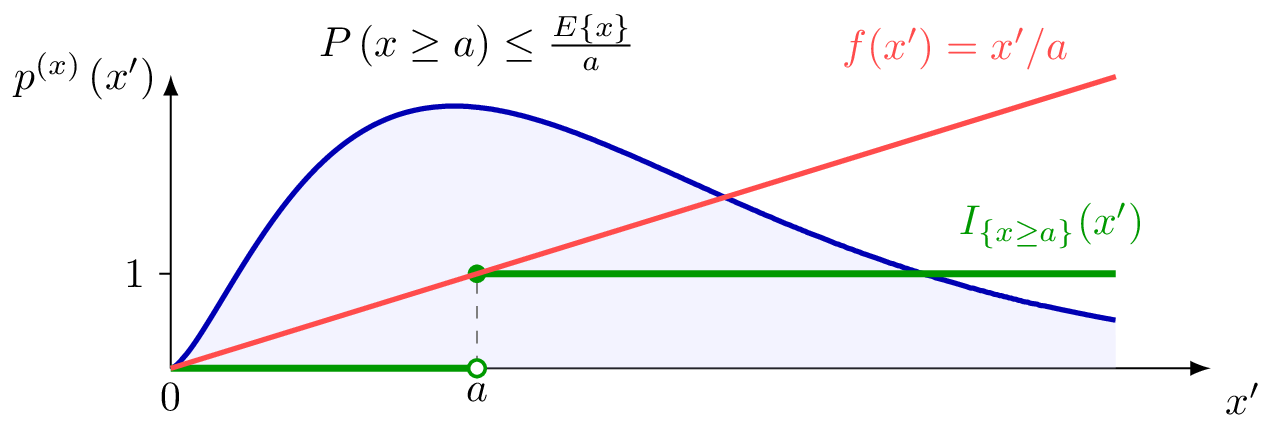Aalto Dictionary of ML – Markov's inequality
Consider a real-valued non-negative random variable (RV) $x$ for which
the expectation $\mathbb{E} { x}$ exists. Markov’s inequality provides
an upper bound on the probability $\mathbb{P}\left(x\geq a\right)$ that
$x$ exceeds a given positive threshold $a>0$. In particular,
\(\mathbb{P}\left(x \geq a\right) \leq \frac{\mathbb{E} \{ x\}}{a} \qquad \mbox{ holds for any } a > 0.
\label{eq:markovsinequality_dict}\)
This inequality can be verified by
noting that $\mathbb{P}\left(x \geq a\right)$ is the expectation
$\mathbb{E} {g(x)}$ with the function
\(g: \mathbb{R} \rightarrow \mathbb{R}: x' \mapsto \mathbb{I}_{\{x \geq a\}}(x').\)
As illustrated in the Figure below, for any positive $a>0$,
\(g(x') \leq x'/a \mbox{ for all } x' \in \mathbb{R}.\) This obvious inequality
implies Markov’s inequality via the monotonicity of the Lebesgue integral (Folland 1999, 50).

See also: expectation, probability, concentration inequality.
Folland, Gerald B. 1999. Real Analysis: Modern Techniques and Their Applications. 2nd ed. New York, NY, USA: Wiley.
📚 This explanation is part of the Aalto Dictionary of Machine Learning — an open-access multi-lingual glossary developed at Aalto University to support accessible and precise communication in ML.
